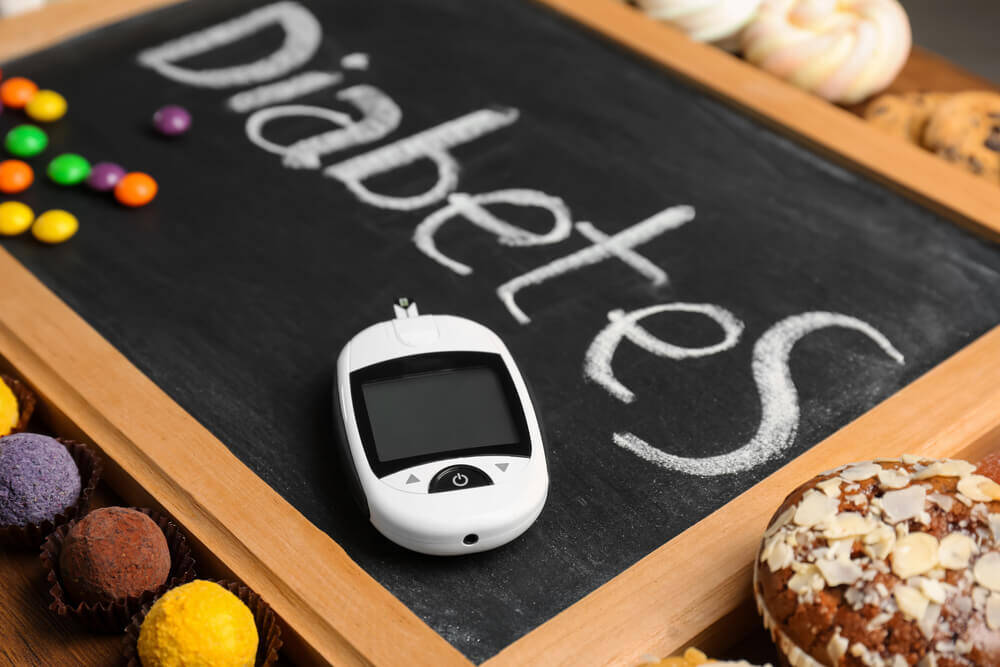Main symptoms of Diabetes
The main symptoms of diabetes may vary from one person to another. The symptoms of being diabetic are also very dependent on the duration and severity of diabetes.
The physical symptoms of diabetes may be so mild that they sometimes go unnoticed. However, with long-standing diabetes, some of the early symptoms of diabetes may be present.
Major Symptoms of Diabetes
The initial symptoms of diabetes may be quite similar for both Type 1 and Type 2 Diabetes. Below are some of the symptoms of diabetes:
- Increased thirst
- Increased frequency of urination
- Feeling very hungry despite having eaten a lot
- Feeling very tired
- Losing weight despite not exercising and going on a diet
The signs of diabetes appear due to very high blood sugar levels in the body. People with diabetes are not able to efficiently absorb the sugar from the blood which results in lower energy needed by the body. This explains why people with uncontrolled diabetes would often feel tired and hungry.
In the state where the body has high blood sugar or hyperglycemia, one way for the body to compensate is the urinate the excess sugar. This leads to an increased frequency of urination. This is the explanation why diabetics tend to go to the bathroom more frequently.
With the loss of volume due to urinating often, the body also senses this and as a result, you would feel thirsty all the time.
Other symptoms that can be seen in diabetics are as follows:
- Blurring of vision
- Slow healing of cuts and wounds
- Tingling, pain, or numbness in the hands or feet.
These symptoms often appear late in the course of diabetes and could signal diabetes complications.
Remember early detection of diabetes is not only lifesaving but can also decrease the risk of the development of complication
There is an overlap between the symptoms of type 1 and type 2 diabetes although the causes of each are very different. Each type would have a specific treatment so they should not be used interchangeably.
Confusion would arise with the age onset of each type. Type 1 diabetes is not only seen in the young but also in adults as well. These patients, although being type1 may have symptoms simar to type 2 diabetes.
What are the first symptoms of Diabetes and can these symptoms appear suddenly?
The appearance of symptoms would yet again depend on the type of diabetes you have. For type 1 diabetics, the symptoms may appear very suddenly. In contrast, type 2 diabetics have symptoms that appear gradually. Some patients might not even have signs at all.
Symptoms may suddenly appear when there triggers. One factor that may precipitate certain symptoms is a viral illness.
A virus can aggravate symptoms most especially when blood sugars are poorly controlled. In some cases, it may even cause Diabetic ketoacidosis (DKA).
DKA happens in people having uncontrolled blood sugar after a viral illness. In patients with type 1 diabetes, the absence of insulin results in the cells being deprived of nutrients.
Despite eating regularly, your body is still starving which results in the breakdown of muscle and fat for energy. The end result will be an accumulation of ketones in the blood and urine.
Remember Diabetic Ketoacidosis is an emergency and if left untreated can result in death.
Patients with DKA would have the following symptoms:
- Fruity odor on the breath
- Heavy breathing
- Persistent vomiting (more than 2 episodes.)
Patients who have the aforementioned symptoms above should immediately contact their health care providers or go to the nearest diabetes clinic for a timely and accurate diagnosis.
Sometimes the diagnosis of Diabetic Ketoacidosis may precede the diagnosis of type 1 diabetes.
Type 1 Diabetes: Signs and Symptoms as seen in an infant or child
The classic picture of diabetes in children is a young child urinating frequently, drinking a lot of water, and losing weight without a change in diet and activity. This child becomes more and more tired and gets sick easily.
Outlined below are the symptoms of new-onset type 1 diabetes:
- Urinating frequently
- High intake of water
- Losing weight without effort
A parent should also be mindful if their potty-trained children suddenly start having nighttime accidents and wet the bed again. These could be symptoms of diabetes.
Diagnosing diabetes in kids can be easy with a simple trip to the doctor’s office or the emergency room. The main dilemma, however, would be recognizing these signs and symptoms in your child and catching the disease early on.
This highlights the importance of raising awareness and knowing diabetes facts to help parents know when to bring their children for consultation.
Type 1 Diabetes: Signs and Symptoms as seen in adults
There is often a diagnostic dilemma in diagnosing an adult with type 1 diabetes. This is because adults are often mistakenly told to have type 2 diabetes.
There has been confusion and some misunderstanding when the age of occurrence of type 1 diabetes.
Let us be clear that type 1 diabetes can start at any age (young or old,) in any race regardless of shape and size.
The following are the symptoms of Type 1 diabetes in Adults:
- Sudden weight loss (without change in diet or activity)
- Increased frequency in urination
- Dry mouth and increasing thirst
- Always feeling tired
- Being hungry despite eating regularly
- Bedwetting
- Blurring of vision
Reaching the diagnosis of type 1 diabetes is often challenging. An additional test to confirm the diagnosis may be needed.
Type 2 Diabetes Signs and Symptoms as seen in adult men and nonpregnant women
Again the symptoms of Type 2 Diabetes are quite similar to type 1. The symptoms of Type 2 Diabetes include:
- Increased frequency in urination
- Dry mouth and increasing thirst
- Always feeling tired
- Slow or poor wound healing
- Recurring infections in the skin
- Blurring of vision
- Numbness in hands and feet.
- Feeling moody and irritable
- Having dark rashes around the neck and armpits (also known as Acanthosis nigricans)
The diagnostic challenge seen in type 2 diabetics is that some of these symptoms can be mild or even absent in certain people. Some individuals may be living with diabetes for several years before being diagnosed with the condition.
Type 1 or Type 2 Diabetes, Which type do I have?
In the instance that you were told that you have type 2 diabetes but are not responding to treatments, this may prompt you to visit an endocrinologist. They may help you determine for sure what type of diabetes you have.
A battery of tests would be typically done and this would include antibody testing and the measurement of a C-peptide level.
My symptoms are gone, does that mean my diabetes is cured?
There are some people, typically those having type 1 diabetes, that may experience a short remission of symptoms.
This time frame or also known as the “honeymoon period” is the time where type 1 diabetics won’t be experiencing any symptoms. An explanation would be is that the pancreas is still ably capable of producing insulin.
The honeymoon phase happens when a type 1 diabetic starts taking in some insulin. The duration of a honeymoon period is variable. It may last for as short as one week and may reach up to a year.
Remember just because the symptoms disappeared, it doesn’t mean the diabetes is gone. One day the pancreas will eventually get tired and stop producing insulin. When this happens and diabetes is left untreated, the symptoms will return.
Diabetes mellitus is a progressive disease. Despite the advancement in science, it still has no cure, but it can be managed.
Gestational Diabetes: Signs and Symptoms
Unlike Type 1 and Type 2 Diabetes, Gestational Diabetes happens exclusively in pregnant women. This is typically diagnosed for the first time during pregnancy.
For most women with this condition, there are not many noticeable and specific signs or symptoms.
Common Gestational Diabetes Symptoms include:
- Increased thirst
- More frequent urination.
If you have any of the symptoms mentioned above, seek medical care immediately. Gestational Diabetes does not only impact your overall health but the baby’s as well.
References:
American Diabetes Association, accessed 11 April 2021, https://www.diabetes.org/diabetes/type-1/symptoms
International Diabetes Federation, accessed 11 April 2021, https://idf.org/aboutdiabetes/type-1-diabetes.html
International Diabetes Federation, accessed 11 April 2021, https://idf.org/aboutdiabetes/type-2-diabetes.html
American Association of Clinical Endocrinologist, accessed 11 April 2021, https://www.aace.com/disease-and-conditions/diabetes/what-you-need-know-about-diabetes
American Association of Clinical Endocrinologist, accessed 11 April 2021, https://www.aace.com/disease-and-conditions/diabetes/type-2-diabetes
American Association of Clinical Endocrinologist, accessed 11 April 2021, https://www.aace.com/disease-and-conditions/diabetes/type-1-diabetes
Mayo Clinic, accessed 15 April 2021, https://www.mayoclinic.org/diseases-conditions/gestational-diabetes/symptoms-causes/syc-20355339



